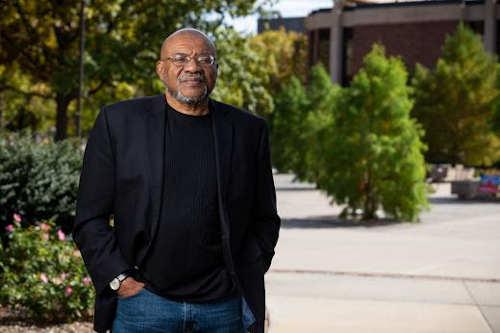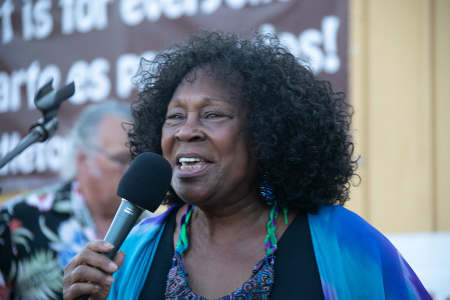- Tim Riley
- Posted On
‘Free Guy’ upends video games; Cable TV preview
‘FREE GUY’ RATED PG-13
Failing to be an aficionado of video games, I approach a review of “Free Guy” with some measure of trepidation for fear of misrepresenting the mechanics of what unfolds.
Even to the uninitiated, Ryan Reynolds’s primary role is that of a background character named Guy in a violent video game that is called “Free City.” In his gaming world, Guy is a bank teller where his best friend is Buddy (Lil Rel Howery).
Given his status as an NPC (Non-Player Character), Guy wears the same blue shirt and khaki pants every day, wakes up to his goldfish, orders the same bland cup of coffee, and goes to work where he endures daily violent robberies.
Guy and his pal Buddy, a security guard at the same bank, cheerfully brave their daily routine. Guy’s usual greeting is “Don’t have a good day; have a great day!” Everyday is “Groundhog Day” until he spies the pretty, unapproachable Molotov Girl (Jodie Comer).
Back in the real world, Guy’s dream girl is based on game architect Millie (Jodie Comer), who developed “Free City” with colleague Keys (Joe Keery). Both of them find their game being purloined by Soonami Studios CEO Antwan (Taika Waititi).
Possessed of a token amount of Artificial Intelligence, Guy desires to activate his free will and become part of the action, if for no better reason than he’s falling for Molotov Girl and hoping for a romance that seems unrealistic.
Meanwhile, Antwan is the epitome of an arrogant, greedy corporate villain. He’s appalled that a liberated Guy, who becomes known as “Blue Shirt Guy,” threatens the orderly nature of his gaming world.
What’s at stake, at least for Antwan, is the pending release of the sequel to the “Free City” video game, a version that would not be compatible with Guy and his NPC cohorts.
Apparently, Antwan cares not at all about his promise to his programmer Keys and creator Millie that the sequel “Free City 2” would uphold components of the original. This explains why Millie is on the outside with a lawsuit against Soonami.
Skullduggery by Antwan leads Keys and others to find ways to expose the villainous corporate honcho’s efforts to conceal the game’s code in order to destroy the upstart Blue Shirt Guy’s growing popularity.
For gamers and non-gamers alike, sweating the operational details of this video game action comedy would likely be pointless. “Free Guy” can be appreciated for the wit and charm of the guy in the blue shirt.
Ryan Reynolds, master of frenetic comedic demeanor (think “Deadpool”), shines with a low-key charisma that brings a rooting interest in his character. Be assured, however, that some fine gags result in agreeable laughs.
CABLE TV PREVIEW
The fall season is upon us, with many new cable programs. From executive producer Curtis “50 cent” Jackson, Starz’s new series “BMF” is inspired by the true story of two brothers who rose from the streets of Detroit in the late 1980s to become a crime family.
Demetrius “Big Meech” Flenory (Demetrius “Lil Meech” Flenory Jr.) and Terry “Southwest T” Flenory (Da’Vinchi) exercise business acumen and a vision beyond the drug trade into the world of Hip Hop to become iconic on a global level.
Their unwavering belief in family loyalty would be the cornerstone of their partnership and the crux of their eventual estrangement. “BMF” is a story about love, kinship and capitalism in the pursuit of the American dream.
The first season of “Heels” on Starz has already started but there’s time to catch up to this story about the people who chase their dreams in the world of small-town pro wrestling.
Set in a close-knit Georgia community, “Heels” follows a family-owned wrestling promotion as two brothers and rivals, Jack Spade (Stephen Amell) and Ace Spade (Alexander Ludwig) war over their late father’s legacy in the ring.
During the TV press tour, Ludwig reported that training for the series made the actors realize “just how much athleticism goes into this sport.”
There will be a longer wait for the launch of Starz’s “Shining Vale,” a horror comedy about a dysfunctional family that moves from the city to a small town into a house in which terrible atrocities have taken place.
No one seems to notice the strange history of the house except for Pat (Courteney Cox), who’s convinced she’s either depressed or possessed – turns out, the symptoms are exactly the same.
Pat is a former “wild child” who rose to fame by writing a raunchy, drug-and-alcohol-soaked women’s empowerment novel. Now 17 years later, Pat is clean and sober but totally unfulfilled.
In the new house, Pat is the only one to whom Rosemary (Mira Sorvino) is visible. During the press tour, Sorvino was cagey in saying much about her character, other than she's “really colorful” and “sort of scary.”
Pat and her husband Terry (Greg Kinnear) are working on a last-ditch effort to save their marriage. Maybe living in an old house in the suburbs where evil and humor collide may complicate matters.
Tim Riley writes film and television reviews for Lake County News.









